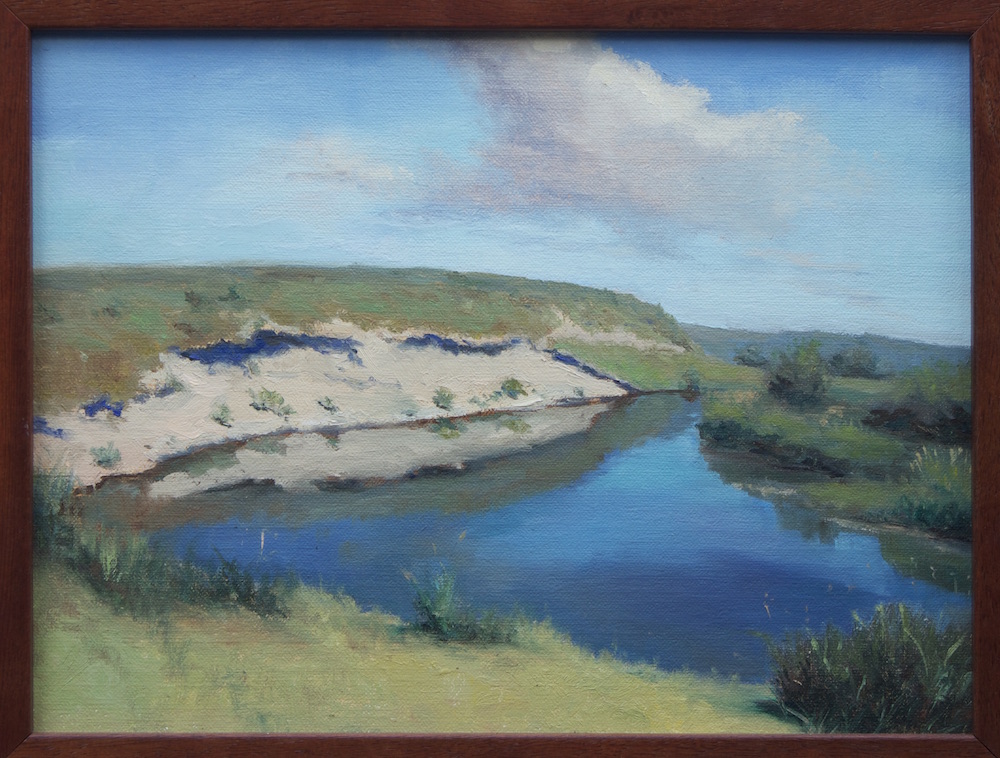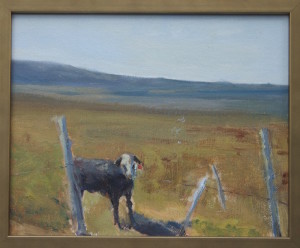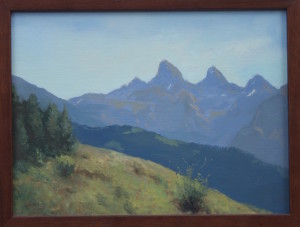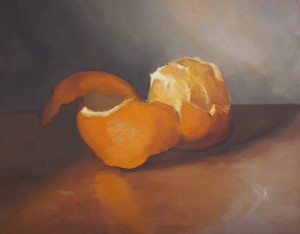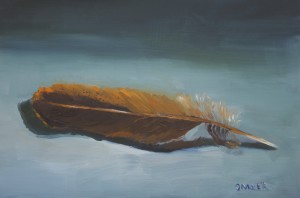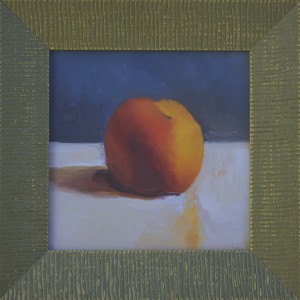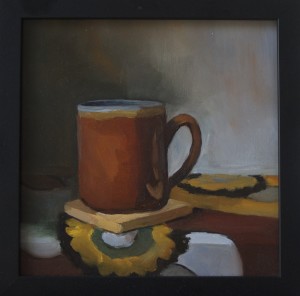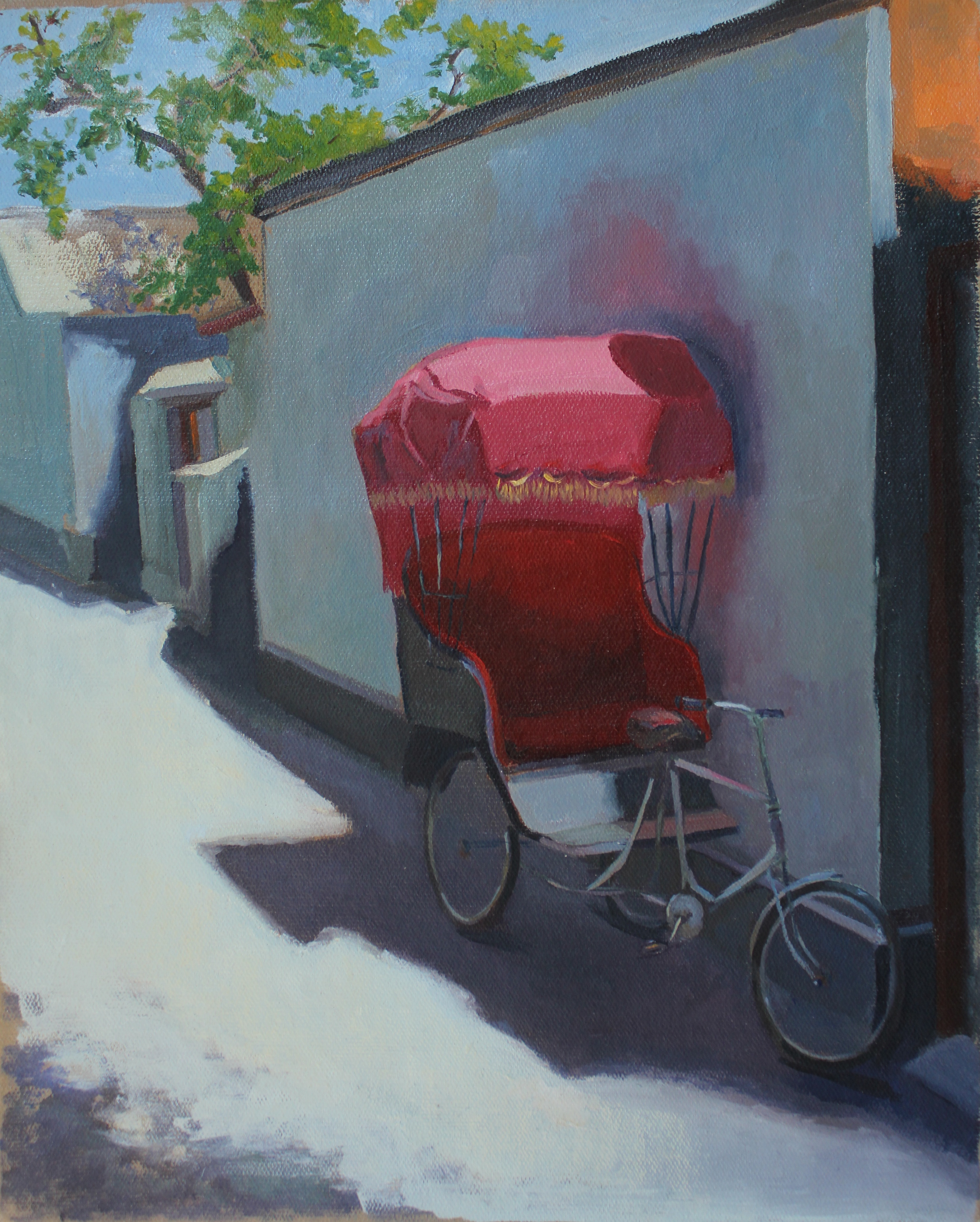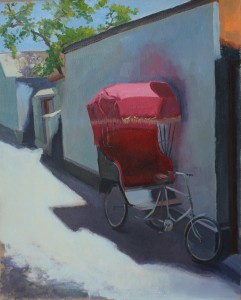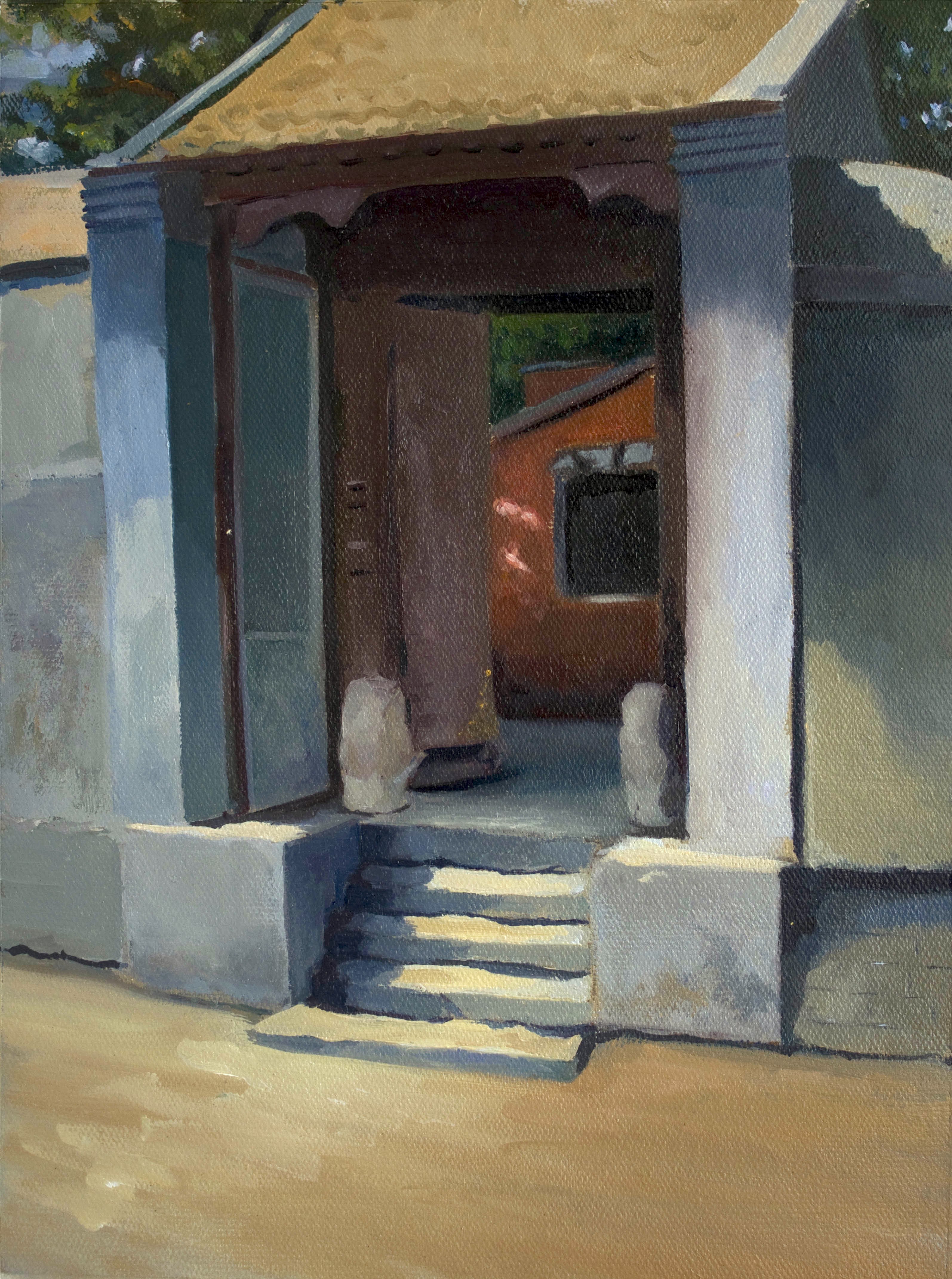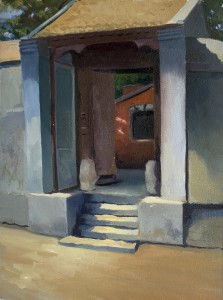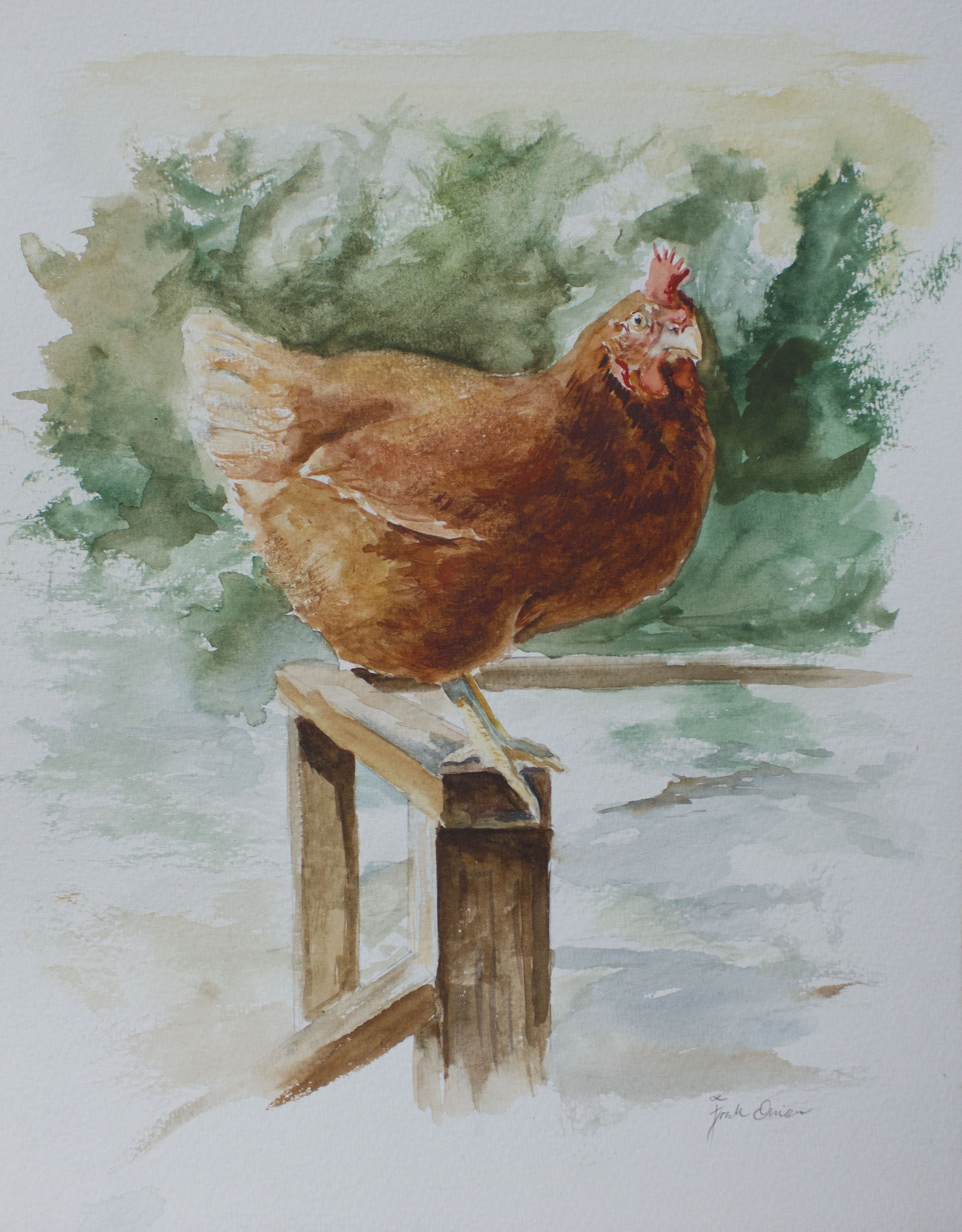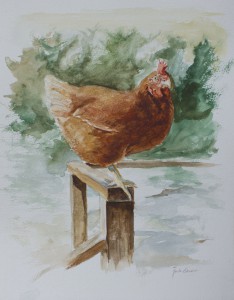This year I received a grant from the Regional Arts and Culture Council in Portland to take two workshops in Idaho and to participate in an outdoor painting competition (painting out doors is referred to as “plein air”). Both workshops were in Eastern Idaho, just a couple miles from the Wyoming border, in two small towns surrounded by National Forests and National Parks. The Tetons, which are part of the Rocky Mountain Range, loom to the East. The area is known for its hiking, fishing, climbing and, in the long, cold winter, skiing.
While I have painted plein air in the past two years during my trips to China and to Nicaragua, most of my previous subjects were intimate reflections of scenes found within cities. Back in Portland, I have painted at Mount Tabor park, but I had never had training in plein air painting, and had never painted in a truly wild setting. During this trip, however, I was able to focus on learning strategies to analyze and paint the landscapes.
The first workshop I took was with Scott Christensen, a well-known landscape painter who teaches workshops at his home in Victor, Idaho. Christensen uses his plein air work as a starting point and reference for large, tonal landscapes he completes in the studio. Over the course of four days he painted several small demonstrations and began a large landscape painting.
During the workshop we went out as a group to paint small 5 x 8 studies at several locations around Victor and Driggs. After two of these sessions we went back to the studio and he selected paintings to critique and correct. Most of his suggestions were about simplifying the design, about making sure that the painting had a balance of cool and warm tones, and that we had the right values.
The second workshop was with Dave Santillanes, who was also one of the judges for the plein air competition in Driggs, which is 9 miles north of Victor. During the two day workshop Santillanes focused on explaining and demonstrating the way he analyzes areal perspective. He emphasized mixing a separate and distinct color for each area, starting out with lighter and bluer colors and getting progressively darker and richer in color as the scene comes forward in space. While I was familiar with areal perspective as a concept Santillanes’ explanations and the way he organized his palette gave me new insights into the interactions between color and space.
For the competition I finished four plein air paintings. I showed three piece for the exhibition and entered one to be judged. The piece I entered in the competition is a scene from a bend in the Teton River that I had first painted during Christensen’s workshop. The location is a popular fishing and boating spot.
I needed two sessions to complete the painting. During the first session there was a strong gust of wind that came and blew my easel and umbrella over (yes the painting landed face down, it always does!). By the time I had cleaned up the painting the light and weather conditions had changed so there was not much I could do but scrape off some of the paint and dirt and return the next day to finish the painting.
I hope to continue painting outdoors next summer. In the meantime here in Portland I am making plans to set up a studio and return to painting the figure and the portrait.

